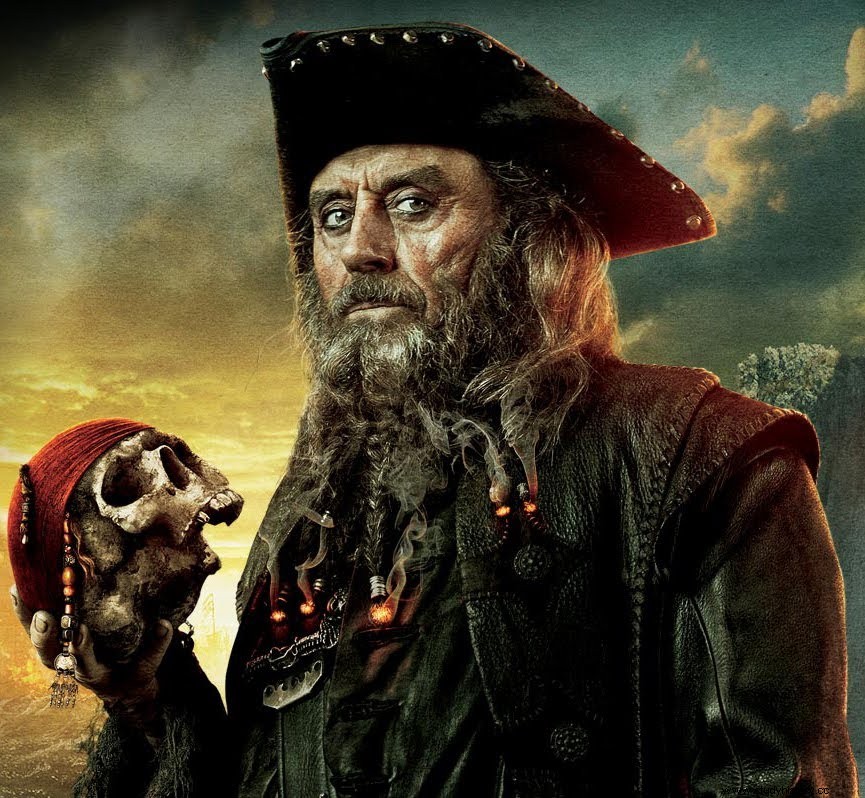There may have been pirates more successful than him, like Bartholomew Roberts, and others who were more eccentric, like Jack Rackham; However, there was only one pirate who managed to create a character that has survived to this day, and to do so in such a way that, even today, when someone thinks of a pirate, the first thing that comes to mind is him. We are talking about the fearsome Blackbeard .

Before he was known by the nickname of Blackbeard , Edward Teach —Or Thatch, or Thach, depending on the source—, was a sailor like any other in the British Royal Navy, born in Bristol in 1680. He began his adventures during the War of the Spanish Succession (1702-1715). However, when the conflict ended with peace, Teach refused to leave the life he had known during the war, and thanks to the sloop given to him by the pirate captain Benjamin Hornigold , he threw himself into the sea and a life of misdeeds at the end of 1716. After capturing ships of various nationalities, the time came that would change him completely. Calling off the coast of Virginia to careen and proceed to Martinique, Captain Teach boarded a large French ship, pistols and swords at the ready, which he would capture and make his flagship, renamed Queen Anne' s Revenge .
It will be around that time, shortly before or shortly after taking the biggest prey from him, Teach began to create the fearsome character that everyone would remember. Between 1716 and 1718 he would terrorize the entire Caribbean, not so much because of his prey, but because of his terrifying appearance. By nature, Teach was a tall, stocky man, so when he grew a long, bushy beard that grew just below his eyes, it was braided; and, during the combat, he began to show off three pairs of pistols, in addition to swords and knives, it was completely normal for his enemies to be intimidated just by seeing him. In addition, to increase the theatricality of his appearance, under his shadow he put on long lit cannon fuses, causing his face to be hidden behind a layer of smoke, as if he were the devil himself out of hell. /p>
But his terrifying character was not limited only to his appearance, but also to his peculiar way of acting. On one occasion he locked himself in the hold with some of his crew and they lit a large quantity of sulfur, to, in his own words, see if they could create their own hell and see how long they could withstand it. How could it be otherwise, he was the last to leave, after the other men had to leave for fear of suffocating. On another occasion, he turned off the light in his cabin and blindly shot everyone with him, seriously injuring one of them in the knee, and, to justify himself, he only said that he had to do it from time to time to find out who was the one. commanded.

Queen Anne's Revenge
Captaining his huge forty-gun ship, displaying a violent personality and a look that made anyone who had seen him tremble, Blackbeard did not hesitate to make the most of his short but meteoric pirate career. After less than two years, he commanded a flotilla of four ships, including Stede Bonnet , a wealthy former Navy officer who, after the war, had decided to pursue the romantic dream of freedom from piracy, but was an absolute no-show when it came to navigation.
Finally, as he could not be otherwise, the colonies of North Carolina and Virginia put a price on his head. Specifically, they valued it worth a hundred pounds, when it was usual not to exceed forty. To put an end to the pirate once and for all, the Governor of Virginia sent the brave young Navy Lieutenant Robert Maynard on the trail of Blackbeard. After several days, the naval officer managed to find Blackbeard's ship stranded near the James River. , on the southeastern coast of Virginia, but the pirate captain, thanks to his contacts, was prepared. After a long fight, in which Blackbeard showed that he was more than just a fearsome façade, Maynard managed to end the pirate's life, for which he had to require more than twenty wounds to bring him down. It was November 22, 1718.
The terrifying legend of him went beyond his death, for after Maynard cut off his head and had it hung from the bowsprit of the Pearl , it is said that his body circled the ship several times before sinking forever. The abrupt end of a successful pirate like Blackbeard was a direct consequence of the fame that he himself had wanted to promote on his person; that although it was worth it to make captures and prizes that he would not have obtained without the fear that he provoked, he would surely have attracted less attention if he had only dedicated himself to "honestly pirating".
Collaboration of Francesc Marí Company
